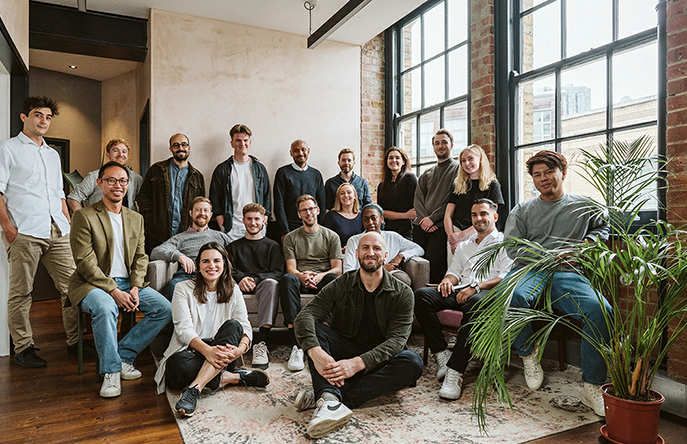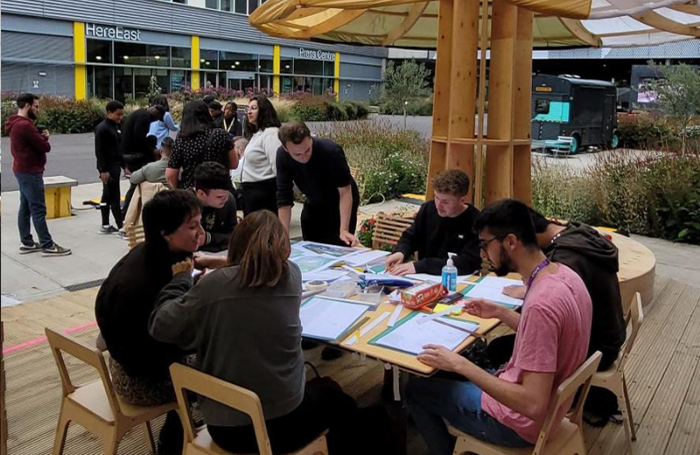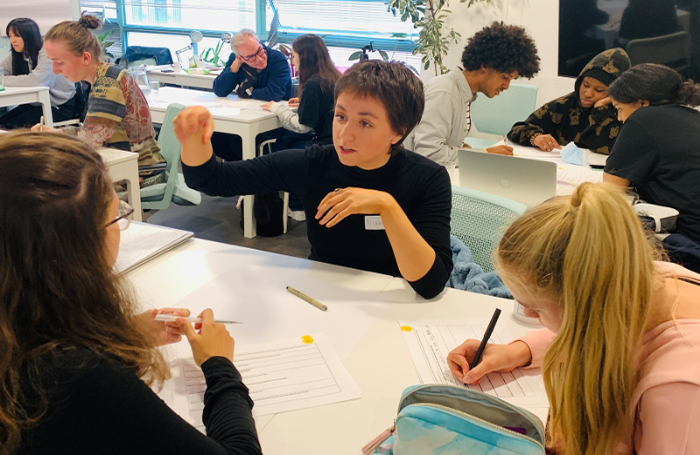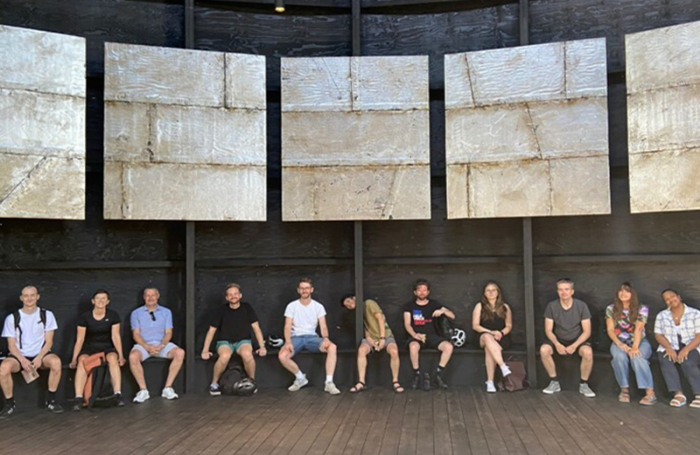Build the Way is a traineeship programme providing an alternative and accessible route into a career designing and making buildings, spaces, cities, and communities.
Working in architecture has historically relied on being able to fund a university degree or having connections within the industry. This often creates barriers and excludes under-represented groups from becoming architects or working in the built environment. We believe that everybody should have the opportunity to engage with architecture and design and have a hand in shaping where we live.
Build The Way is an innovative nine month traineeship for people interested in understanding more about working within design and the built environment. It involves collaboration between a number of East London based architectural practices to offer passionate individuals the opportunity to gain valuable experience and learn useful skills.
It is a paid opportunity offering the London Living Wage based on a 32-hour working week, with no experience-based barriers to application; instead, places are offered to those who can show a passion for design and cities.
As part of the traineeship, trainees will receive professional training, creative and technical support, with mentorship and career advice from practices, industry professionals and the POoR Collective. Trainees will be enrolled on the London School of Architecture (LSA) EPQ course and offered further resources and learning opportunities at the LSA, to help develop a network to support them in their next steps.
The programme will involve an introduction to the architectural design process, with exposure to real construction projects, as well as the other professionals and consultants involved in making buildings and place making. The aim is to inspire and show trainees a broad range of opportunities for working in the built environment and help them towards a career that allows them to play a part in shaping their cities and communities in the future.
Why are we doing it?
GPAD: We believe that there should be more alternative and accessible routes into careers involving architecture, design, and shaping our cities. This will impact the way our homes, workplaces and communities develop in years to come.
We want our industry to be equitable and to have a diversity of voices and ideas shaping our cities and spaces. By a number of smaller practices working together we hope to play a significant role in helping to diversify the industry and to encourage more people to consider architecture as a career. Our collective aim is to play a part in helping a greater variety of people access opportunities in the industry, by creating a bridge and access point into traineeships paid jobs, and University.
For the first time, the ARB is looking to change the way architects are trained. This has had support from the public who see that the current system is outdated and exclusive. We hope Build The Way can play a part in understanding how we can train and support individuals coming up through the practice route. Highlighting the skills learnt practice over those exclusively gained at university. Demonstrating that classroom-based learning isn’t for everyone and that we can get to the same end goal via more inclusive routes.

Who is it aimed at?
HUT: In a world where there are so many barriers for young people to become successful, we believe that professionals in the architecture industry have a duty to provide opportunities for the younger generation. They both aim to make the profession more inclusive by training and empowering the young people that will shape the industry in the future. This is necessary to ensure that architecture is relevant to the society that it operates in. To design buildings and environments that are equitable and just, designers must be representative of the community that they are crafting or altering.
Build The Way aims to bring in a wide range of viewpoints, experience and talent to the table, whilst nurturing the next generation of architects. Building the way for future generations.

What are the goals for the programme?
GPAD: We believe that the traditional route of full-time university education shouldn’t be the only route into architecture. There needs to be a variety of ways to drive inclusivity and diversity and ensure our cities are equitable spaces and everyone has a voice and representation. We would like Build The Way to grow into a programme that helps support this.
We would like to grow the traineeship, partnering with more like minded practices to offer further opportunities. The programme has the potential to refine the course and to grow as an alternative route into paid opportunities or apprenticeships and helping to ensure inclusivity in the teams shaping cities.
Through our relationships with key partners like the LSA and PoOR as well as our sponsors, we hope to continue to develop the programme to inspire people to consider a career in the industry and provide them with the support and skills to take the next steps on this path.
We are seeing a surge in individuals wanting to retrain or develop and translate their existing skills into a career they hadn’t previously thought of. The concept of going back to university or not earning makes this urge to retrain unattainable.
The hope for Build The Way is for its impact to go further than our industry. To demonstrate how anyone could have an impact on the development of buildings, spaces, cities, and communities. This might be through a career in architecture, or engineering or surveying. We want it to be a platform to celebrate transferrable skills and celebrate a diverse way of thinking and designing.

Where do you look for inspiration?
HUT: We don’t have to look for inspiration – it is all around us – being in London is inspirational.
Young people and the way they approach life; let’s be receptive to naivety and making mistakes, that’s how we learn. Architecture has traditionally been a very conservative area of design that is at risk of finding itself left behind.
Old buildings; buildings which were designed to be made from local materials that did not require shipping huge distances, and that were appropriate for their surroundings in terms of longevity and how they weathered. Old buildings were designed to minimise waste because there simply was not a surplus of energy to squander. They relied on thermal mass, daylight, natural ventilation, orientation and worked with nature rather than fighting it. Vernacular architecture sounds unfashionable, but there is a lot to learn by understanding the lessons learnt by our predecessors when making buildings over hundreds and thousands of years.
Colleagues; discussing what we do and questioning our thinking is absolutely fundamental to the design process.

What do you think is the most important issue for architects to focus on right now, and what are you doing as a practice to tackle it?
GPAD: The biggest issue we face as both professionals and individuals is the climate and biodiversity crisis and as built environment professionals. We have an ethical responsibility to combat the crisis and contribute to a built environment that is healthier, more diverse and stimulating for all.
At GPAD, we have a history of retrofit and reuse projects and understand that every building holds different challenges, possibilities, and characteristics to celebrate. Approaching each project creatively can create interesting spaces whilst limiting the embodied carbon associated with demolition. When working on new build projects we interrogate the design to minimise carbon and ensure the building is well designed, flexible, and adaptable and that it can be maintained and repurposed easily over time.
Our current site at 130 Old Street is a retrofit scheme where we’ve designed with a long-life loose-fit approach, whilst improving the relationship with the street to benefit the surrounding context. By repurposing the existing and understanding its context, we’ve been able to maximise the potential of the site sensitively and environmentally, boost biodiversity and allow the users to create their own versatile environments.
Co-authored by HUT and GPAD










